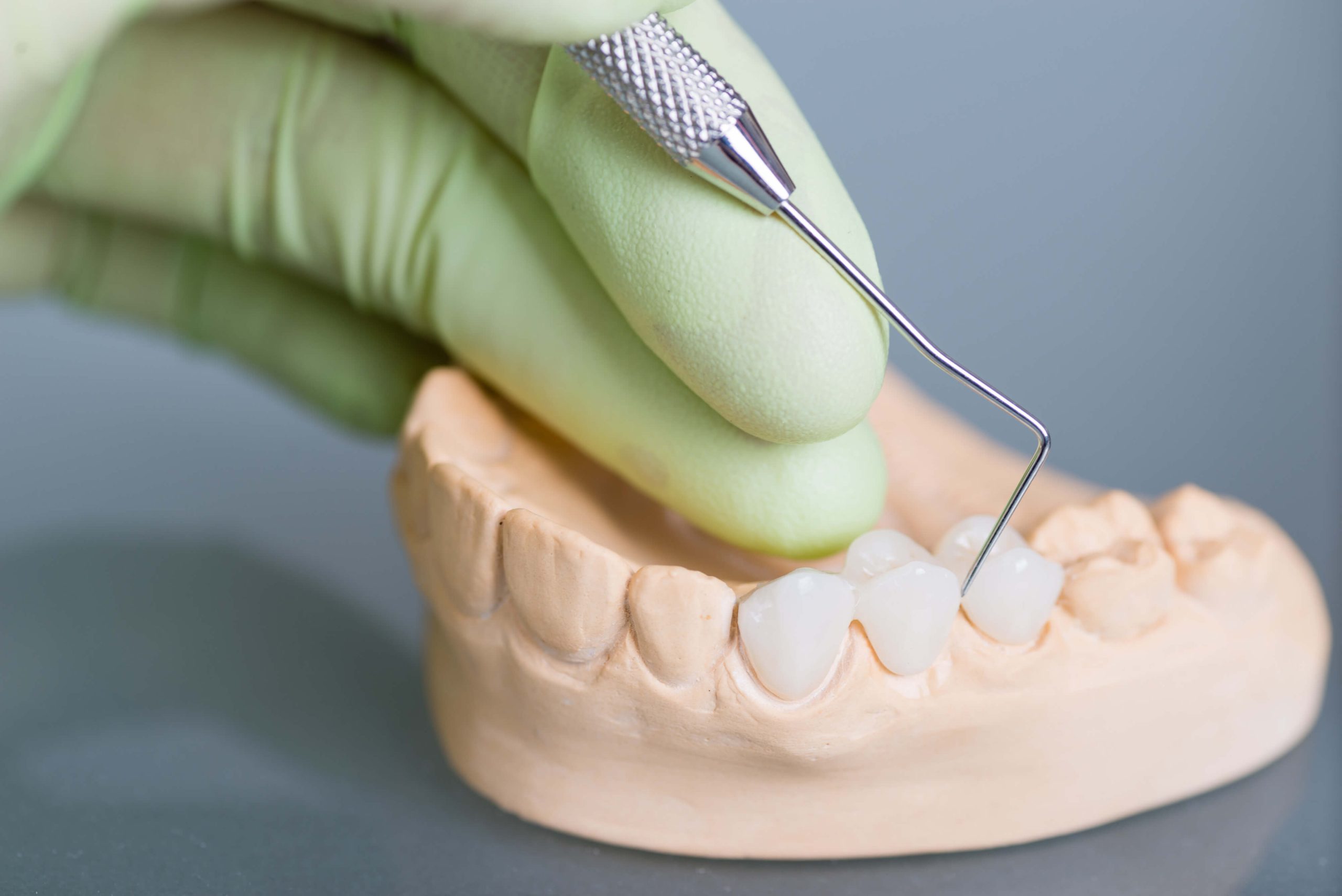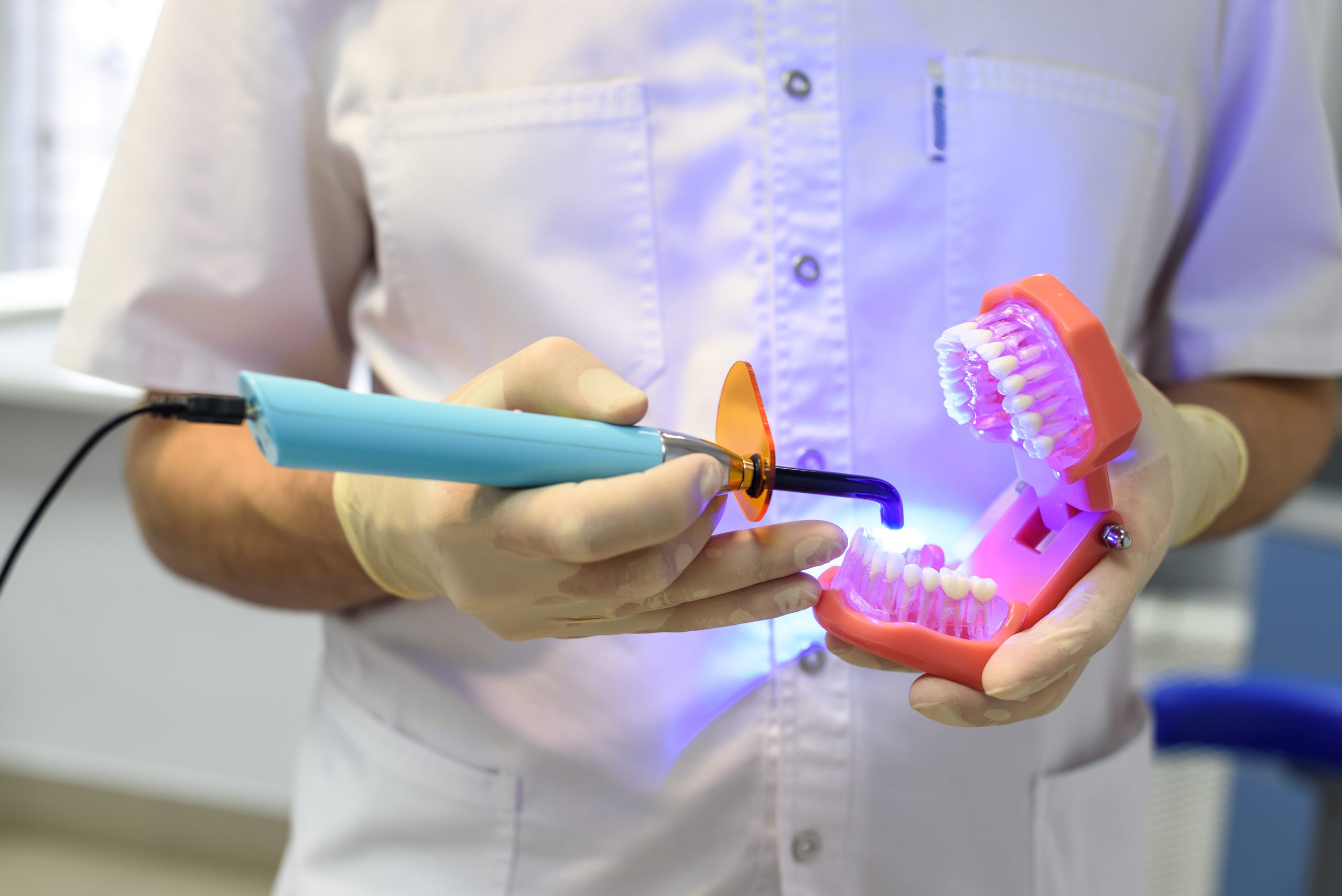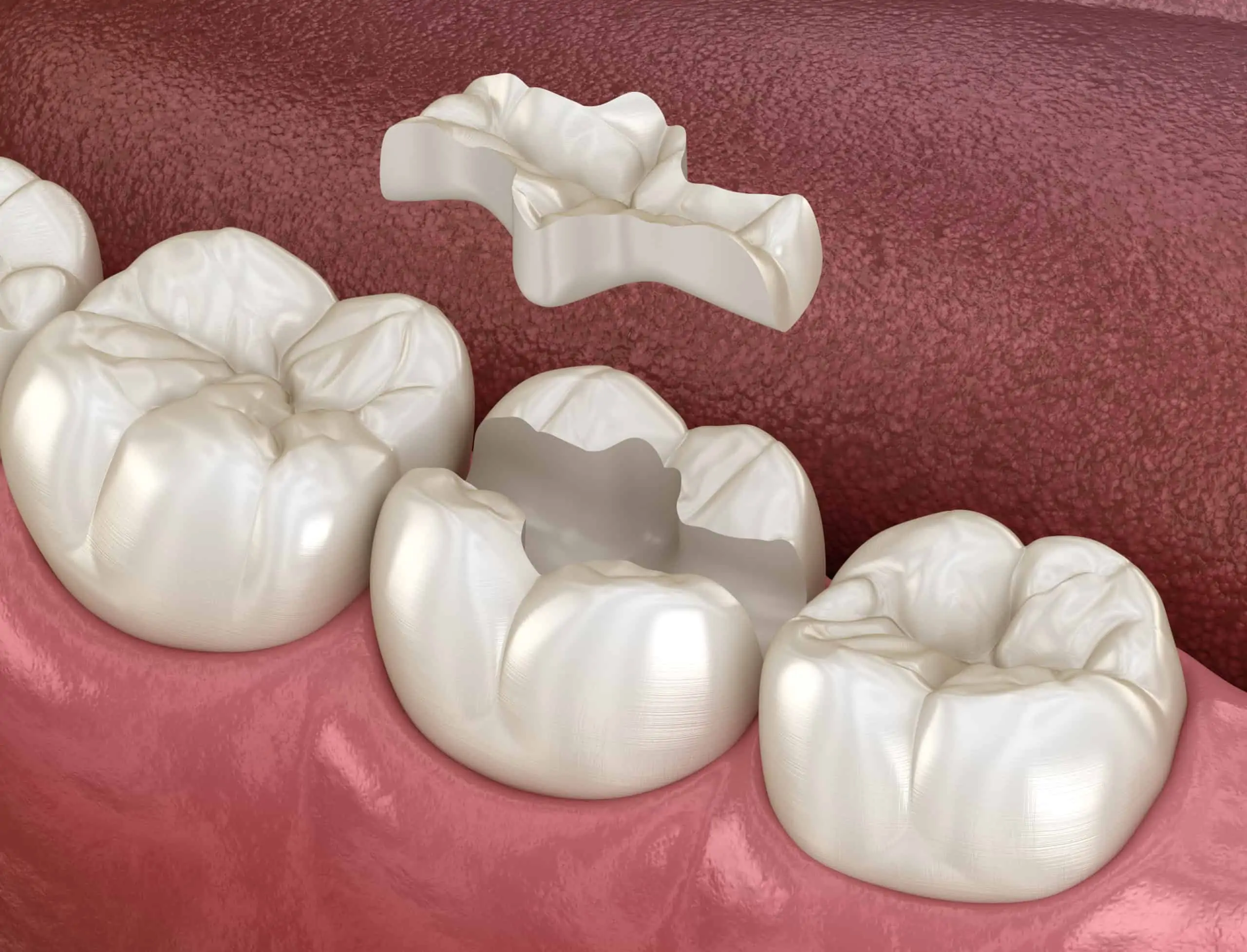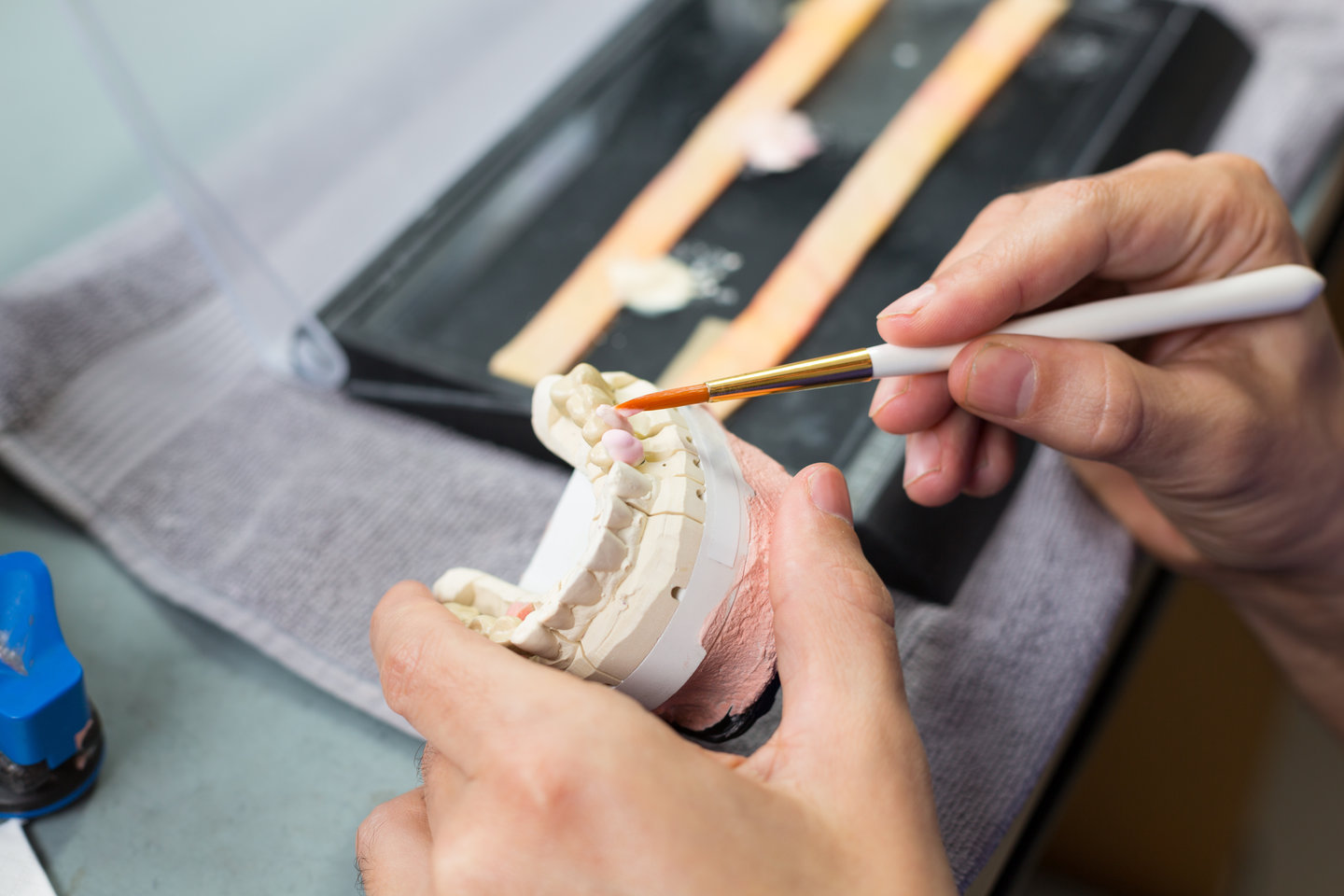Dental inlays, onlays, and overlays, prominent in cosmetic dentistry, serve as comprehensive crown fillings utilised for extensive cavities when the tooth structure is significantly compromised. When one or more pins are employed to secure the inlay, onlay, or overlay, the procedure is referred to as a ‘pinlay’. For advanced dental inlay, onlay, or pinlay solutions in London, turn to Thousand Smiles. We are committed to restoring your dental health while enhancing the aesthetic appeal of your smile.

A dental inlay, also called tooth inlay, is the filling that sits in the tooth and is often used for restorative work. The inlay helps to rebuild the tooth’s chewing surface. Unlike the traditional filling procedure where the dentist builds up inside the tooth, an inlay is custom-made in the laboratory as a solid piece which the dentist places inside the tooth.
You can only get an inlay at Thousand Smiles if the cusps of your tooth are still intact. However, a dental inlay is different from a bone inlay or graft.
A dental onlay, also called the tooth onlay, is useful for restorative dental work, but unlike the inlay, the onlay fits on the tooth. It rebuilds the chewing surface of the tooth and the cusps. It is also custom-made in the lab as a solid piece which the dentist will attach to the affected tooth.
The overlay is more extensive than the onlay and inlay. A dental overlay is a partial crown made in the lab which rebuilds the cusps, chewing surface and part of the lateral tooth surface. However, a dental crown covers the entire lateral tooth surface to the gum.
The onlay sits inside the tooth, while the onlay sits on the tooth, covering the biting surface and at least one cusp, and the overlay sits on the tooth, covering both cusps and part of the lateral tooth surface.
Our dentist may recommend an overlay or onlay when your cusps and the edges of the tooth or the biting tooth surface are damaged.

Usually, the dentist will recommend a filling when at most, 40% of the tooth is damaged. A filling is also known as a direct filling because you can apply it directly on the teeth in one visit. However, inlays and onlays are indirect fillings.
Like the crown, they are custom-made in the lab, so you will need at least two visits to get your inlay or onlay. The first visit will be for the cleaning and to take your dental mould or digital scan, while the second is for fitting the indirect filling.
If you have a severely decayed or damaged tooth that a simple filling cannot fix, or a dental filling will be too big and may weaken the tooth structure, inlay, onlay, or overlay may be the most suitable option.
| Inlays, onlays and overlays | Fillings |
|---|---|
| Requires less tooth removal | Requires more tooth removal |
| Can strengthen the tooth structure | Can weaken the tooth structure |
| Can last for up to 30 years | Composite filling lasts for up to seven years, while amalgam, silver and gold fillings last longer |
| Custom-made and do not shrink or change over time | May shrink over time |

Inlays, onlays and overlays offer more restoration than a filling but less than crowns. Crowns cover the entire tooth and are for severely damaged teeth, usually teeth with over 60% damage. Before fitting a dental crown, a good amount of the tooth requires removal for it to fit properly.
However, with indirect filling, less of teeth require removal. In most cases, the outside of the tooth remains untouched. Usually, when a dentist wants to repair a damaged or decayed part of the tooth, the dentist will first consider a filling. For this treatment option, only a small part of the teeth requires removal, making the procedure cost-effective and relatively easy.
If the dentist feels that a filling can’t solve the problem because the tooth is severely damaged or too weak, an inlay, overlay, or onlay may be the most suitable solution. Where the remaining tooth structure isn’t enough and removing a little more of the tooth structure is best, the dentist may offer a dental crown.
| Overlay, inlay and onlay | Crown |
|---|---|
| Suitable option when the tooth damage is about 60% | cover the entire tooth surface, preventing further damage, fracture or breakage |
| Can last for up to 30 years | Can last for up to 15 years, while gold crowns last for about 30 years |
| Less damage to the existing tooth | More drilling of the tooth to ensure the crown sits on the top |
Three materials are available for inlays, onlays and overlays. Your choice will depend on your aesthetic desire, expected durability and cost.
The gold restorations are made of a gold alloy consisting of copper, gold and other metals, making them extremely strong and durable. However, this is the most expensive option, and with good oral care, your gold inlay, onlay or overlay can last for 30 years.
The downside of this option is the increased visibility, making them more suitable for the back teeth.
This less expensive option blends with the natural teeth better than the gold option, but it is not as durable and may crack easily.
This material is a mixture of ceramic and plastic and is mostly used for white fillings. You can get a composite inlay or onlay that matches your natural tooth colour. Unlike the traditional composite filling, this material is less likely to shrink from the tooth walls.
| Gold | Porcelain | Composite | |
|---|---|---|---|
| Cost | Most expensive | Moderate price | Least expensive |
| Aesthetics | Visible when used on the front teeth | Blend with the natural teeth | Blend with the natural teeth but stains more easily |
| Durability | Over 30 years | Over 25 years | Over 25 years |

Our dentist may administer local anaesthetic on your first appointment while preparing and cleaning the tooth. This procedure may involve drilling the tooth to remove decayed or damaged parts and even old fillings. After preparing the tooth, the dentist will take the mould of the damaged tooth, usually by inserting a small putty tray.
We also use 3D imaging for increased accuracy, then send the information on the shape and size of the restoration to the lab for the custom-made option. While you wait for the inlay, onlay or overlay from the lab, the dentist will cover your tooth with a temporary filling.
During your second visit, our dentist will remove the temporary filling and check if the restoration from the lab fits your tooth. The dentist will bond or glue it to the tooth if it fits.
You may experience soreness after the procedure, but the pain is minimal. If you feel pain, over-the-counter medications can relieve the discomfort. In the first couple of days, the tooth with the restoration may feel strange, but you will get used to it.
The cost of inlays, onlays and overlays varies significantly based on different factors, including location. You can get this restoration between £400 – £600 per tooth.
There is a small chance that a dental inlay, onlay or overlay will fall out, but this rarely happens, only when something goes wrong with the bonding process. You can visit the dentist to bond back the inlay, onlay or overlay.
An inlay, onlay or overlay doesn’t prevent further decay or damage, so you need to maintain a good oral hygiene routine and visit the dental practice regularly to see our dentist and hygienist for a dental check-up and professional teeth cleaning.
If you want a dental inlay, onlay or overlay, visit Thousand Smiles today. You can also call us on 020 8050 0280 or email [email protected] to schedule a consultation at the dental practice.